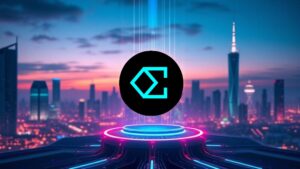In the rapidly evolving world of augmented reality (AR), Microsoft’s HoloLens stands out as a pioneering device that brings immersive experiences to life. For developers eager to tap into this innovative technology, choosing the right software tools is crucial. This article delves into the essential AR development software for HoloLens, highlighting the key features and benefits of each tool.
Introduction to HoloLens AR Development
HoloLens is more than just a device; it’s a platform that allows developers to create interactive, 3D holographic experiences. Whether you’re building educational tools, gaming apps, or enterprise solutions, the right software can make all the difference. Here are the top tools you need to know:
Key AR Development Tools for HoloLens
Unity is the go-to choice for many AR developers due to its versatility and ease of use. It supports C# scripting, allowing developers to create complex interactions and animations with ease. Unity’s vast community and extensive documentation make it an ideal platform for both beginners and seasoned developers.
Key Features:
- Cross-Platform Support: Develop once and deploy across multiple platforms, including HoloLens.
- 3D Modeling and Animation: Create stunning visuals with Unity’s powerful graphics capabilities.
- Physics Engine: Add realistic physics to your AR experiences.
2. Vuforia Engine
Vuforia enhances HoloLens capabilities by enabling developers to connect AR experiences to specific images and objects. It’s particularly useful for applications that require object recognition and tracking.
Key Features:
-
Model Targets: Detect and track 3D objects in real-time.
-
VuMarks: Use unique identifiers to recognize specific objects.
-
Extended Tracking: Maintain object tracking even when the object is out of view.
3. Unreal Engine 4
For developers looking to push the boundaries of graphics and physics, Unreal Engine is the perfect choice. It offers advanced features like dynamic lighting and physics simulations, making it ideal for complex AR applications.
Key Features:
- C++ and Blueprints: Use either C++ for detailed control or Blueprints for visual scripting.
- Advanced Graphics: Create photorealistic environments with Unreal Engine’s powerful rendering capabilities.
- Physics Simulations: Add realistic interactions with advanced physics simulations.
4. Microsoft Visual Studio
Visual Studio is the primary IDE for HoloLens development, providing essential tools for debugging, testing, and deploying AR applications.Key Features:
- Multi-Language Support: Develop with C#, C++, and other languages.
- Integration with Unity and Unreal Engine: Seamlessly integrate with popular game engines.
- Debugging and Testing Tools: Ensure your app runs smoothly with Visual Studio’s comprehensive debugging features.
The Development Process
Developing an AR app for HoloLens involves several key steps:
- Setup Environment: Install Unity or Unreal Engine, and ensure you have a HoloLens device or emulator for testing.
- Design AR Experience: Use CAD models or images to create AR targets with Vuforia or similar tools.
- Implement Interactivity: Use languages like C# to add interactivity via gestures, voice, or gaze.
- Test and Deploy: Use Visual Studio for debugging and deploying the app to HoloLens devices.
Key Takeaways
- Unity and Vuforia are recommended for most AR development tasks due to their ease of use and extensive support.
- Unreal Engine is ideal for complex graphics and physics-intensive applications.
- Microsoft Visual Studio is essential for debugging and deployment.
FAQs
Q: What programming languages are used for HoloLens development?
- A: C#, C++, and JavaScript are commonly used.
Q: Can I use existing AR apps on HoloLens?
- A: Yes, apps built with Unity and Vuforia can be adapted for HoloLens.
Q: What is the best tool for beginners?
- A: Unity is often recommended for its user-friendly interface and extensive documentation.
Final Thoughts: Unlocking the Future of AR
As AR technology continues to evolve, the potential for innovative applications on HoloLens is vast. By leveraging the right software tools, developers can create immersive experiences that transform industries and revolutionize how we interact with information. Whether you’re a seasoned developer or just starting out, the tools outlined here will help you unlock the full potential of HoloLens and bring your AR vision to life.







